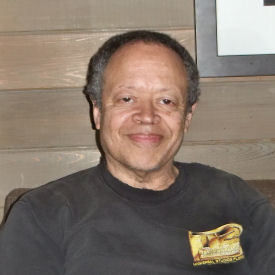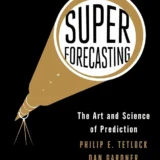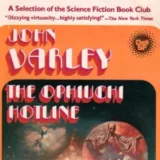
First published in 1954 by Better Publications, Inc., Lost in Space by George O. Smith is a wonderful example of pulp culture in science fiction. With absorbing complexity, readers will find themselves getting lost in space along with the characters. This novel is not to be confused with the silly television series about the troubled space faring Robinson family (though their robot totally rocked). No, this book is better. The popularity of Smith’s version was evident by the multiple publications it earned, including one in Italy. This review is based on the book included in the 1960 Ace Double Novel #D-431mentioned here at Amazing Stories last week.
The paired novel on the reverse side of this book is Earth’s Last Fortress by A.E. Van Vogt. At a pittance $0.35 (price boldly posted on “both” covers) which is about $2.75 in today’s market, getting two novels in one was still a steal back then. The awesome fact that Lost in Space has a slick silver rocket with swooping wings on the cover is a bonus – because as everyone knows that rockets are cool.
In the story, Alice Hemingway is engaged to Commodore Ted Wilson of Space Service. Wanting to see the interstellar sights before she is inevitably “set-down” in marriage, Alice jumps at the chance when she is invited to join her employer Mr. Andrews on a trip to see some of the exotic worlds she had read about. It will also give her a better appreciation for Ted’s work. But shortly after takeoff, Spaceflight Seventy-nine is struck by a catastrophic engine failure, forcing Alice, her boss and pilot Jock Norton to jettison away in a small lifeship. With just enough power to sustain life support, the three survivors drift aimlessly through space hoping for rescue.
Getting two novels in a single book might be exciting for some fans, but finding two stories within the same novel is an unexpected surprise. As an emotional Ted Wilson leads a band of spacers in search of survivors – and the woman he loves, a separate storyline revolves around an armada of alien ships sitting a safe distance away monitoring the humans. Probing for new worlds to colonize, exploit, or just conquer, the race known as the Brade studies the humans at length to determine which course of action they should take.
The romantic element in Lost in Space is exemplar of the gender partiality of the time it was written and the social concerns it invoked. Alice does not want to be stuck groundside while Ted is off gallivanting across the galaxy. Man is capable of reaching the stars and she wants to experience the journey too. But the tragedy aboard Spaceflight Seventy-nine creates a cultural “taboo” as the young woman is soon stranded alone for days – with two men. Separated, Ted and Alice’s relationship is put to the ultimate test through faith and devotion.
From a technological standpoint, the scientific element is intriguing for a story published only a few years prior to man’s first insertion into space. The anticipation (or expectation) of man conquering space travel is what fans have come to expect. But the details and difficulty in searching the vastness of space for such a small life pod using limited tools of detection will leave most readers lifting their heads in admiration. The need for painstakingly gridding the search area in a conical array from the initial point of catastrophe makes sense, regardless of the futility. This attention to detail confirms the immensity of the environment and draws the reader in with the believability factor.
The alien perspective is one of enlightenment. Sure, they share some of the same faults of human existence like vulnerability, greed and a need for supremacy, but aliens can be dysfunctional too. The most prominent aspect is the point of view the reader gets by looking back at ourselves through alien eyes. With the language barrier being an unforgiving obstacle, the alien’s only perspective of humans is through observation. Picture an outsider with zero human contact monitoring your life over a random twenty-four hour period, and then consider what their interpretation might be. The alien readings of the human actions in Lost in Space become a lesson in civil condition. (This is where I digress with a Shakespearean reference that life does become a walking shadow and we are the poor players strutting and fretting upon the stage! Sorry.)
In essence, Lost in Space is more than just a story about being lost in space. In this book, George O. Smith left us with an imprint of the 1950’s social contrivances that forged the fandom of science fiction. Technological advances, social impurities, and foreign perspectives of our human existence have appeared in literature before, but mixing them all together in a single short novel makes for a classic story worthy to get lost in. Besides, there is always the cool rocket artwork on the cover.










Dear Rick, I understand you perfectly, of boy I was fan of the series and I felt in the duty of saying something. Thank you for your answer.
It is a good article. But: ” This beginner is not to be confused with the silly television series…” Hummm, The series is a wonderful classic. additionally, you didn’t mention the Film of 1998 with William Hurt. Regards.
Awesome point! Bad choice of words? Agreed. By silly, I meant campy or perhaps even cautious. I think they could have done a lot more edgy things on the television series, character developmental stuff. Some of the aliens seemed too cartoony in a few episodes for my liking. Perhaps it was just a limitation of the 1960’s culture. Regardless, you’re correct in labeling the show as a classic. Heck, I even had a Lost in Space lunchbox when I was a kid.
The props like the laser pistol, rifle and the all-terrain Chariot set a standard for some of science fiction of today. The Robot could also be considered a prop too, but it my mind it/he was a vital character. But when the Robot is my favorite character, I tend to hesitate giving more credit to character development.
As for the 1998 movie, I was not too thrilled after having higher expectations prior to its release. In my biased opinion, I thought it had too much Hollywood and not enough substance.
In the end, my main blog focus is/was on the George O. Smith story titled Lost in Space. Realizing the popularity of the television series sharing the same title could and most likely would confuse readers, I felt obligated to point out the separation between the two. I even considered saying “Warning, Warning, Warning” but I worried it would put more focus on the series. I already tend to digress way too much as it is. I simply wanted to discuss the novel – and just the novel. This is also why I chose to disregard the movie and probably why I did not pay more attention to my diction when discussing the series. “Silly” was a silly word to use and I hang my head.
The gist of my review was to point out how the story by George O. Smith was a complex examination of being human from both man’s perspective and that of the aliens. For some reason, they never put stuff like that on lunchboxes.
Thanks for reading and keeping me on my toes.